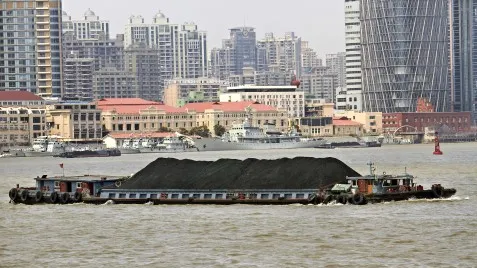
Asia turns to coal amidst a global energy crisis
India and China are amongst the markets that have increased coal production for energy security.
In recent years, the power industry has seen markets switch to clean energy sources, leaving a trail of phase-out plans for coal-fired power plants across the globe. Now, the global energy crisis that saw disruptions in natural gas supply, leading to higher prices, is driving markets to re-trace their steps back to coal to secure energy supply.
Data from the National Bureau of Statistics showed China’s coal production rose by 11% to 2.19 billion tonnes in the first half of the year, whilst India’s coal production grew over 30% in June.
“Turning to coal is something that is necessary. We all know the impact it has on the environment, but if your natural gas price is four times more than what you can pay, then you don't have a choice,” Ghee Peh, Energy Finance Analyst, Institute for Energy Economics and Financial Analysis (IEEFA), told Asian Power.
“These disruptions in trade flows mean that coal is now a financially cheaper option than natural gas. We are not saying one is better than the other. We are just saying one is cheaper than the other,” Peh said.
Decarbonisation in China and other markets
China is one of the markets increasing its coal production to reduce reliance on imports. This will likely lead to a rise in carbon emissions in China to a level to remain within the government’s dual carbon target, as experts have clarified.
The projected increase in emissions will hardly affect China’s plan to achieve carbon neutrality and reach peak carbon emissions by 2030. This is because investments in new generation capacity will likely be earmarked for renewable energy technologies, particularly those needed in solar and wind power development.
“The important question to consider is not just about the capacity being built, but also how much of that is going to be used because building a coal plant doesn't necessarily mean it's going to be used all the time,” The Lantau Group Senior Manager David Fishman said.
Fishman cited the case of a province in northwest China where there is a surplus capacity of solar during the day, which is still insufficient to meet power demand during the night. Whilst a battery can be helpful, the province and other areas where renewables are being built will still need coal for when stored energy has been used up.
China will likely see more coal-fired power capacity as it backs up its renewables deployment, but as Fishman emphasised, China’s coal fleet will not likely lead to a high average capacity factor.
“You're going to end up with more capacity, but the average capacity utilisation ratio for the whole fleet is going to be lower.”
In addition to this, Carlos Torres Diaz, Head of Power Research, Rystad Energy, said investments in new capacity in China will likely fund solar and wind technologies even as the market moves to increase its coal output at a faster pace.
IEEFA’s Peh backed this, saying IEEFA data from 185 financial institutions showed reluctance to invest in coal projects. Peh added that coal projects may be a bad business case due to other factors besides the challenges of having 185 institutions refusing to provide funding.
“You wouldn’t want to invest in new capacity because you will face community opposition, aside from facing no banking; and then if you put your cash into the [coal] mine and suddenly coal gets phased out, you lose $200m-$400m,” Peh said.
Rystad’s Diaz noted that increasing coal is a trend likewise seen in other countries that are looking to secure their energy supply. “European coal power generation has increased 11% this year. India has also aimed to increase domestic coal production and is currently studying the slower retirement of aging coal plants,” he said.
India has increased domestic coal output in the first quarter of the year. It has also boosted imports of coal to meet its growing energy needs, according to GlobalData.
“There will be an increase in coal-based electricity generation in the region to overcome the current energy crisis,” Pavan Vyakaranam, Analyst at GlobalData, said.
He noted that of the total coal capacity under construction, nearly 95% is accounted for by Asia with China alone making up over 48%. Within Asia, China holds a share of over 51% of coal capacity under construction, followed by India which accounts for 20.6%.
Alternatives: Definitely, not gas
Amidst challenges in coal, markets can look at other energy sources for alternatives, but Peh noted it is unlikely that natural gas could fill this role because of increasing prices.
“Natural gas is a lower CO2 option than coal–that is correct. It has less carbon dioxide emissions than coal. It burns supposedly cleaner, and we agree,” he said.
“But if your cost is three times more than coal for the average citizen at a time when wages are not going up and economies are not recovering faster, then the real issue is one of price.”
He added this there has to be some form of agreement on the price that will bring it closer to what consumers and governments can afford, which is $10-$12 per mmBtu (One Million British Thermal Unit).
GlobalData’s Vyakaranam shared the view that renewable energy, such as solar and wind, supported by hydro or thermal gas could serve as alternative sources. He also saw nuclear as an alternative to markets, such as South Korea, the Philippines, and Singapore, exploring adding nuclear in their power mix. Gas could also play a part, but not in the short-term, Vyakaranam said, citing the tighter gas supplies, high prices, and demand in Europe.
“For instance, Australia is rapidly deploying wind and solar projects and could have a dramatic shift from coal-based power to renewables,” he said. “Countries such as India and China also have aggressive targets for renewable power to achieve their long-term climate goals.”
The Lantau Group’s Fishman, likewise, sees nuclear as an option for China as it serves as a baseload that runs all the time, which can be deployed and dispatched as needed, similar to coal. Nuclear power has a different level of flexibility with its run-state varying from 7,000 to 8,000 hours per year, compared to 4,000 to 5,000 hours per year in coal-fired power plants.
He added gas could be an alternative, but the high price and volatile international markets make it a less attractive option.
“Beyond that, the only other energy types that could fill a similar role to coal would be something like hydropower.”



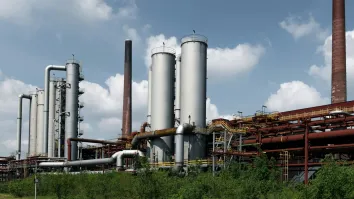
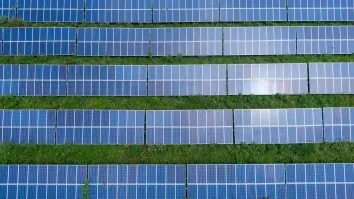
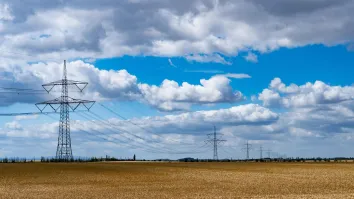
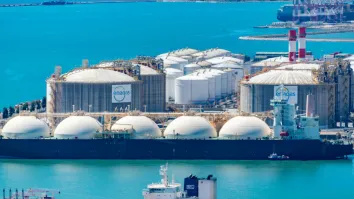












 Advertise
Advertise







